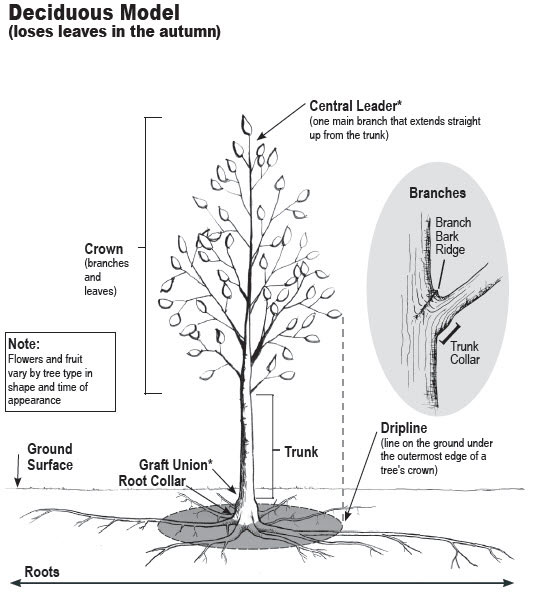Learn
Alabama Trees
Watch Discovering Alabama: Alabama Trees. You will need the information in this video to complete 2.01 Alabama Trees.
What is a tree?
A tree is a woody (geographic information system) plant that has a well-defined stem and a formed crown. The tree has three major parts called the roots, the trunk, and the crown. Let's look more closely at each of those parts.
Roots
The roots are the part of the tree that is typically found below ground. The root system serves as an anchor and supports the tree. The roots take up water and nutrients that are held within the soil. The roots are also where manufactured food is stored within the plant. There are two basic types of tree roots called the taproot and fibrous root systems.
Taproot System:
The taproot system has one large root that grows downward from which other roots sprout laterally. An example of the taproot system is the Longleaf Pine, which is Alabama's state tree.
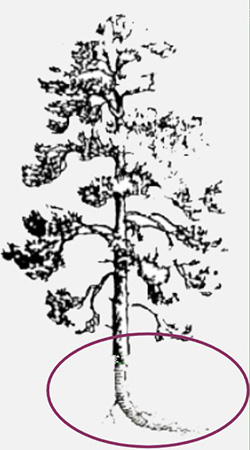
Fibrous Root System:
The fibrous root system has many branching roots that spread throughout the soil. An example of a tree with a fibrous root system is the White Oak.
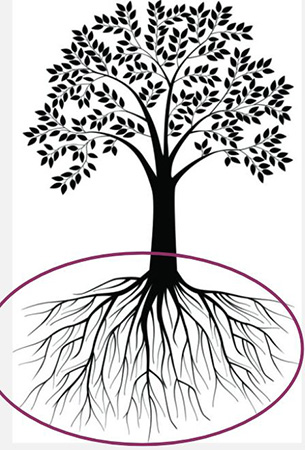
Here's another comparison of a fibrous root system and a taproot system. While this example is in a plant, rather than a large tree, the principle is the same.
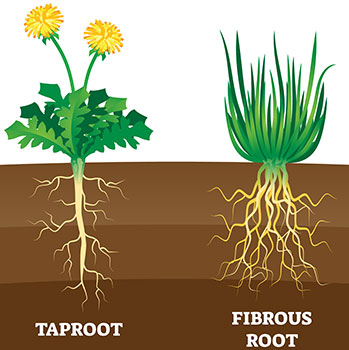
Trunk
The trunk is the main structural portion of the tree. The trunk moves nutrients and water from the roots to the manufacturing part of the tree, which is referred to as the crown. The trunk is also the most valuable portion of the tree in terms of value to the landowner. The trunk contains a majority of the useful wood in a tree that is turned into lumber, furniture, paper, and many other forest products.
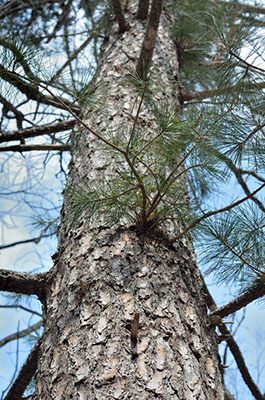
Trunk Components
Learn more about the functions each part plays in the life of a tree.
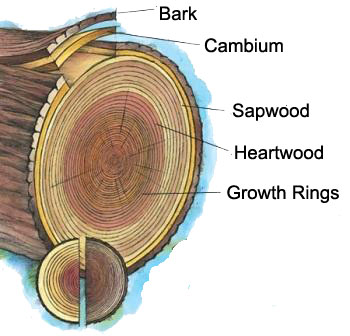
Bark:
The bark is the part of the tree that protects the trunk. It is formed by a thin layer of cells referred to as the cork cambium. A tree has two layers of bark: outer bark and inner bark. The outer bark is the tree's protection from the outside world. The outer bark helps keep rain from coming in, while also keeping the tree from drying out when the weather is dry. The outer bark helps fight off insects, cold, and heat. The inner bark, or "phloem," is the pipeline that food passes through to get to the rest of the tree. It lives for a short time, then dies and becomes part of the protective outer bark.
Cambium
The cambium is the growing part of the trunk. Cambium is responsible for tree growth and forming annual rings. It produces new bark and new wood each year. It does this in response to hormones that pass down through the inner bark with food from the leaves. These hormones, called "auxins," stimulate growth in cells. Auxins are produced by leaf buds at the ends of branches as soon as they start growing in spring.
Sapwood:
Sapwood, or xylem, is the living portion of the tree. Sapwood is the tree's conduit for moving nutrients and water from the roots to the crown. Remember, "Zip up the Xylem!" It also serves as storage for food that is made in the leaves. Sapwood is new wood. As newer rings of sapwood are created, inner cells lose their vitality and turn to heartwood.
Heartwood:
Heartwood is the central, supporting pillar of the tree. In larger, older trees the center of the trunk is dark in color and is referred to as heartwood. The cells in this portion of the trunk no longer function and now only serve to give strength to the tree. Although dead, heartwood will not decay or lose strength while the outer layers are intact. Heartwood is made up of hollow, needlelike cellulose fibers bound together by a chemical glue called lignin. In many ways heartwood is as strong as steel. A piece 12" long and 1" by 2" in cross section set vertically can support a weight of twenty tons.
Growth Rings:
The cross section of the trunk contains a series of rings. These rings are sometimes called annual rings. Under normal conditions a tree's rings are produced each year.
Crown
The crown is the top part of the tree that contains the branches, buds, twigs, flowers, fruit and leaves. This is the manufacturing plant of the tree. The major role of the crown is to contain the leaves to collect sunlight so photosynthesis can take place. The crown also is beneficial to wildlife to serve as an area for nests.
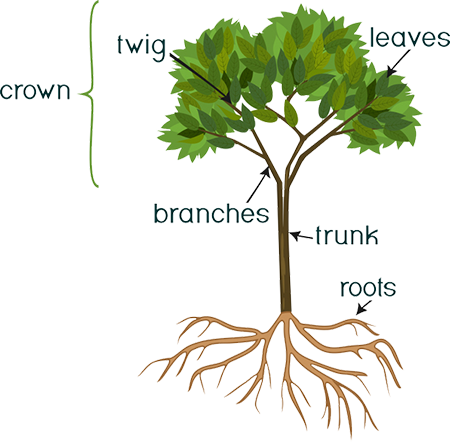
Leaves:
Leaves make food for the tree. This fact tells us much about their shapes. For example, the narrow needles of a Douglas fir can expose as much as three acres of chlorophyll surface to the sun. The lobes, leaflets, and jagged edges of many broad leaves have their uses, too. They help evaporate the water used in food-building and reduce wind resistance. They even provide "drip tips" to shed rain that if left standing could decay the leaf.
Evergreen Diagram
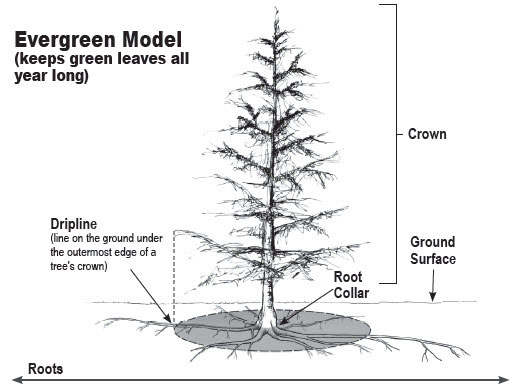
Deciduous Diagram:
